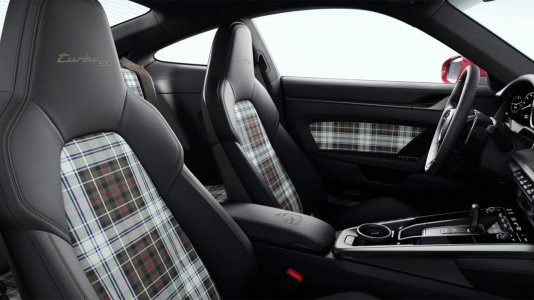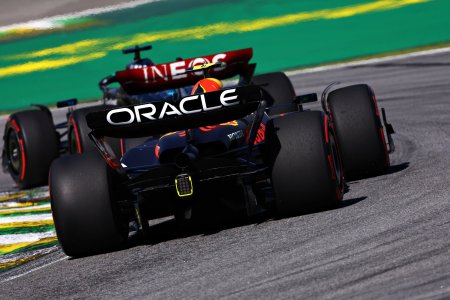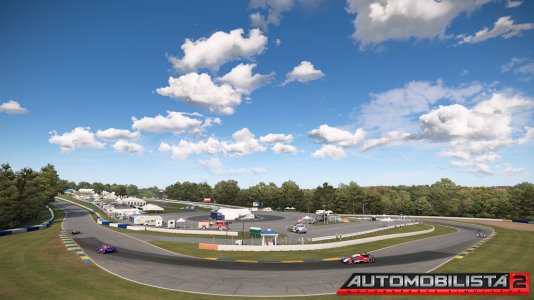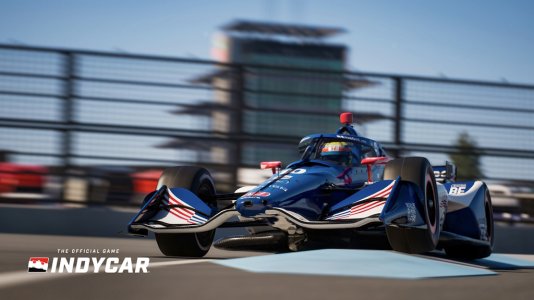IndyCar: Honda unveils inspired aero kit design
Monday, 09 March 2015
By Marshall Pruett/Images: HPD
If the
first glimpse of a 2015 Verizon IndyCar Series aero kit left you somehat uninspired, the second aero kit unveiling – this time from Honda – makes a stronger and more evocative visual statement.
Created by Honda Performance Development and its partner Wirth Research, the company's road course/short oval aero kit bears a resemblance to a modern Formula 1 car in key areas. If Chevy's aero kit looks like the familiar Dallara DW12 chassis with a variety of bits and pieces added to it, Honda's aero kit has transformed the car into something far more dramatic – a notable departure from the DW12 underpinnings.
As the byproduct of thousands of hours of design and virtual testing, not to mention the maximum six days of track testing permitted by IndyCar, HPD vice president Steve Eriksen says Honda's aero kit has involved massive effort by all parties involved in the project.
"One of the first steps is computer aided design, to create the shapes that you're going to evaluate," he said. "There's actually a step a little bit before this in some cases which is testing out some theories in the driving simulator. So we actually had a number of cases where we tried some things in a simulator by changing forces in simulation on the car and seeing how it worked. Then once you say, 'OK, that's interesting, I don't know how to make that kind of force in the car but let's start designing parts and figure out how to do it.'
"Once you have the CFD data you have some idea of how much the aero components are going to be loaded. Then you to do what's called finite element analysis which is an analysis of the strength or relative strength of various parts of the component that you're looking at. You can also do an analysis of how much the part is going to flex under aero load. Because parts are not infinitely stiff they will flex on aero load and you can look at in FEA and understand that.
"We were allowed six days total of testing your prototype components. We could select what tracks to go to, and we had [Andretti Autosport's] Marco Andretti, Ryan Hunter-Reay and Carlos Munoz handle the track testing for us."
The kit revealed today will be used for most of the races on the 2015 IndyCar calendar, and some of the components must carry over to the low-downforce/low-drag Speedway kits that will appear for the first time during the 99th running of the Indy 500 in May. As Eriksen notes, despite the explosion of wings and downforce on Honda's road course/short oval kit, the brand's entire focus for its aero kit was done with one event in mind.
"Areas open for development are specified with what they call legality boxes," he explained. "It is literally a volume around a particular part of the car, and some of those include sidepods; engine cover; rear wheel guards; front and rear wing main planes; and end plates. The Speedway front wing main plane and the Indy 500 unique rear wing main plane. That particular item that we are allowed to develop has only one purpose and that is the Indy 500. We focus on the Indy 500 as our number one goal. Everything else, once you establish what is best for the Indy 500, then other things come along after that."
Initial aero kit costs are set at $75,000 in 2015, and with updates to the kit allowed for 2016, those new pieces are limited to a maximum of $15,000. To prohibit the use of painfully expensive materials, a minimum weight of 55 pounds for the road course/short oval kit, minus optional pieces, has been established. Downforce figures have been kept private, but rumors of an additional 600 pounds of downforce – or more – have been mentioned in association with the Honda RC/SO. Without the late reduction in overall aero kit downforce mandated by IndyCar, the 2015 bodywork could have brought an increase of at least 1500 pounds of downforce over the stock Dallara kit.
Delving into Honda's bodywork, the "RC/SO" (Chevy uses the same RC/SO designation for their kit) features a front wing package that is by far the most complex aerodynamic system ever fitted to an Indy car. Using the base Dallara front wing element as the starting point, Honda loaded each side of the nose with three exceptionally long and tall cascade elements. The cascade array serves as a downforce-producing deflector that significantly blocks the face of each front tire, and in another notable departure from the Chevy kit, the inside of those cascade elements lack an endplate. The five exposed element tips allow Honda's front wing package to generate vortices, which help to concentrate the air flowing off of them while generating additional downforce.
Where the Chevy kit uses a single element that stands tall on a post mounted on the outer edge of the front mainplane, Honda has taken a more aggressive approach by fitting a tall outer and inner endplate that features five wing elements that sit in front of each tire. That system also acts like a ramp to divert air over the tires.
Altogether, and based on what Honda is willing to show the public (and Chevy) a week prior to its official debut at Barber Motorsports Park, 17 wing elements are packed onto the front of the car. With some of the additional aero kit options teams are allowed to use, and with an understanding that both manufacturers have likely kept some components hidden until their cars hit the track at Barber next Monday, more elements and other components could be seen.
Beneath the cascade elements, two strakes can be seen, and a Gurney flap is also present on the outer edges of the top elements to extract air from beneath the wing array. That Gurney is almost capped by a fence on those upper elements. Moving down to the front wing endplates, a gap is maintained between the inner portion of the endplate and the top cascade elements that bend down and attach to the main plane to further accelerate and extract air headed out and around the front tires.
Honda's front wing package could cause fans to stop and spend 30 minutes trying to sort out how all of the curves and shapes work together in an integrated manner to produce staggering amounts of downforce.
Moving back to the sidepods, Honda has also taken a different approach to their design than Chevy. Chevy separated their sidepods from the rear wheel ramps, giving air a chance to flow around the sides and between the gearbox and rear wheels, Honda has gone with full-length sidepods that extend out to the rear tires. In place of the familiar ramps that send air over the top of the drag-producing tires, Honda has taken an opportunity to achieve the same effect with a pair of wing elements, adding more downforce to the aero kit. In place of Chevy's flow conditioner that sits atop each sidepod, Honda uses a set of smaller ramps can be found on the side of the sidepods, and they appear to pull air from the opening in the floor and divert it up toward the bigger ramps. Chevy's use of a wide, rectangular radiator inlet profile is different than the more closed and rounded inlet on Honda's kit, and at the back of the sidepods, exit ducting of some sorts is shown beneath the big tire ramp elements. A channel can also be seen on top of the sidepods adjacent to the rear tire ramps that allows air to be drawn down into the flow.
Honda's engine cover uses the overhead air intake to feed its twin-turbo V6 engine, meaning both manufacturers have opted for this solution, yet the similarities end there. Chevy's engine cover makes an immediate downhill run after the roll hoop, while Honda's heads straight back a considerable distance before angling downwards. Honda has also added a narrow fin to the spine of its engine cover to provide yaw stability – a similar, albeit compact version of the fin found on LMP1 and LMP2 sports cars.
The final section of Honda's aero kit features a downforce-dripping take on the rear wheel guards and rear wing. Using the stock Dallara mainplane per the aero kit rules, Honda has added two elements and massive endplates to the back of the car, and at least in these renderings, the endplates are not vented like the Chevy kit. The rear wheel guards also show a different line of thinking as the Honda's are relatively flat on top and sport two dihedral wing elements – effectively extending the width of the rear wing. The Chevy, in their renderings, use one element, and the wheel guards are more rounded.
Honda has gone about its treatment of air flowing through the wheel guards in a different manner as well, with slots and rectangular openings made at the rear of the units.
Combined, more than 100 individual pieces comprise Honda's aero kit. The changes are so significant the nose of each Honda Indy car now carries the official red "H" badge.
Honda's success at the Indy 500 since the new turbocharged era of IndyCar racing began in 2012 has been impressive. Two of the three 500s have been won by the brand, but in the season-long IndyCar Manufacturers' championship, Chevy has claimed the title three years running.
Although their 2.2-liter engines have been incredibly close on power, torque, and driveability, Chevy has had an edge in the win column and with reliability since 2012. It makes the new frontier with aero kits the most obvious place for Honda to find an edge, and based on what we've seen from their renderings, Chevy could have a serious fight on their hands to hold onto the Manufacturers' crown.


























